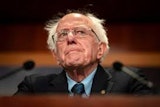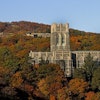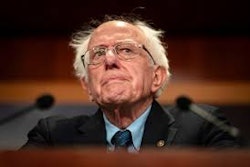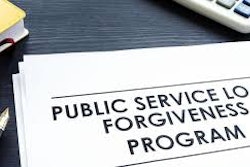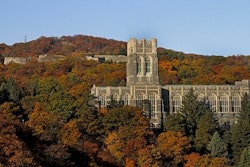Tribes are leery about what’s to come over the next three years as the University of North Dakota tries to seek approval to keep the “Fighting Sioux” logo and imagery.
Ron His Horse Is Thunder, tribal chairman of the Standing Rock Sioux Tribe, knew it was going to happen — and it did.
He says the ink had hardly dried on a settlement between the National Collegiate Athletics Association and the University of North Dakota (giving the school three years to get the OK from Sioux tribes to keep calling its sports teams the Fighting Sioux) before members of the tribe were being wooed by people siding with the university.
“They came down and took a crew of (Sioux) veterans to entertain them,” he says.
It’s a situation that Sioux leaders in North Dakota are preparing themselves for as UND tries to keep the school’s nickname and logo, and Sioux leaders try to safeguard their culture. It all stems from a 2005 NCAA decision to ban member schools from using American Indian nicknames and logos, deemed hostile and abusive, during championship competition.
The University of North Dakota — a school of more than 12,000 students, including 400 American Indians — was among 18 schools across the country using American Indian symbols as mascots, nicknames and logos that fell under that definition.
Some, like Florida State University, which goes by the Seminoles nickname, got the affected tribes to give their “namesake approval,” thereby allowing use of their name and imagery.
According to the NCAA, UND didn’t.
UND challenged the NCAA’s rule in court, particularly the way the NCAA has gone about enforcing the rule. The nearly threeyear battle has now come down to a settlement in which UND has until November of 2011 to get namesake approval.
In December of 2000, the Spirit Lake Dakota Sioux tribe passed a resolution giving its approval to use the name Sioux. But Ron His Horse is Thunder says the Standing Rock Sioux Tribe has been firm on its position.
“We’ve already said we don’t want UND to use us on their logo,” he says. “It’s disrespectful.”
He points to the sometimes derogatory references to Sioux by fans during athletic events and even a recent study that found that logos and images can sometimes lead to negative perceptions inside and outside of a particular group.
Athletics are very important at UND, a Division II school making the jump to the more prestigious Division I next season. The football program is very successful and has only had one season of six or more losses since 1989. Its hockey squad is perennially ranked among the nation’s top college programs and plays in the sparkling Ralph Engelstad Arena, which is regularly filled with nearly 12,000 fans.
The arena is operated separately by an independent corporation that allows the university to use it at no cost, but the plan is to turn it over to the university in a couple of decades. But that arena is fully adorned with logos and references to the Fighting Sioux. Now, university supporters are working hard to keep them there.
UND spokesman Peter Johnson says university and state officials are still talking about how they plan to approach the Sioux tribes. But the corporation running the arena has already been doing some things, since it isn’t officially part of the university, he says. Officials held a meeting in early November with Sioux veterans where Ron His Horse is Thunder says they were entertained.
“We have brought in groups of Native Americans from North Dakota reservations over the past two years in efforts to build communication relationships,” says Chris Semrau, who helps run the arena.
Semrau says the meetings were only for Sioux members to ask questions and get answers about that and other issues. The November meeting was planned far in advance, he says.
Ron His Horse Is Thunder’s take on the meetings: “Basically they were trying to buy them with trips and mementos and plaques.” He worries that the university will be trying to woo and cajole Sioux tribal leaders into changing their minds.
“It’s going to put a lot of political pressure on our tribal leaders to change our minds,” he says. “But we’ve already given our opinion.”
In a statement shortly after the settlement was reached in late October, United Tribes Technical College President David Gipp agreed.
UTTC is a North Dakota school that primarily serves Sioux and Chippewa students.
“Allowing a three-year period to influence the tribes leaves the door open for UND and its agents to continue their meddling in the social and political affairs of tribal nations, causing untold damage in the lives of good people and families who only wish to have their ways and heritage respected,” Gipp said.
Johnson says they plan to be fair and diplomatic with the Sioux tribes and even discuss how the university can do more to connect with the Sioux nation.
“It’s got to be done that way,” he says. “The question is what are the common-ground areas we can come to.”
None on the imagery issue, says Ron His Horse Is Thunder.
“We don’t want to be used in that manner,” he says. “That in itself is enough.”
–Add Seymour Jr.
There are currently 0 comments on this story.
Click here to post a comment
© Copyright 2005 by DiverseEducation.com
